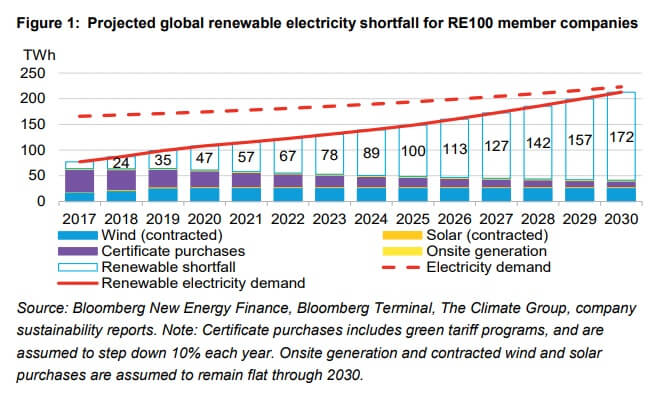The companies currently committed to the RE100 campaign will need to procure an estimated 172 TWh of additional clean energy generation by 2030 to meet their renewable energy targets. If corporations were to meet this demand through PPAs, it could catalyze 87 GW of new solar and wind build, representing a potential $94 billion investment opportunity. In this report, we look at the mechanisms RE100 companies have enlisted to reach their current renewables progress, calculate the clean energy shortfall from the signatories by 2030, and analyze the strategies these corporations can use to meet their targets.
- Currently, 125 companies from 20 countries are signed onto the RE100 campaign. In 2016, these companies cumulatively consumed 163 TWh of electricity, greater than the load of Sweden or Poland.
- Although corporations have grabbed headlines for signing over 14 GW of corporate PPAs since 2015, certificates or similar mechanisms from existing renewable projects (such as green tariffs in Europe) remain the most prominent way for RE100 companies to meet their renewables targets, making up 73% of their clean energy supply in 2016.
- We estimate cumulative electricity demand from the current RE100 group will grow to 223 TWh by 2030, based on historical electricity demand growth for each company. This leaves a renewable electricity shortfall of 172 TWh for companies to meet their targets – comparable with Egypt and Illinois’ electricity consumption in 2016.
- If signatories were to meet this demand through power purchase agreements for new renewable build, we estimate it would catalyze the development of 51 GW of new wind build globally, and an additional 35 GW of solar – a $94 billion investment opportunity. Nearly half of this demand is expected to be met in the Americas region.
Filed Under: Uncategorized




